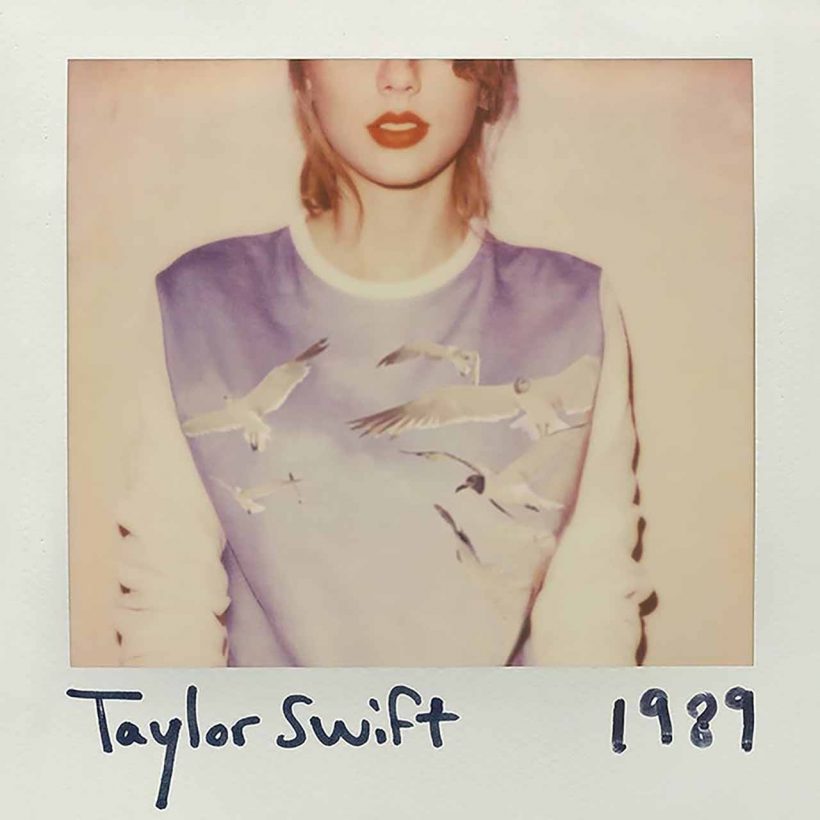‘1989’: How Taylor Swift Shook Off Her Past And Hit New Peaks Of Artistry
By living her life and breaking new ground, ‘1989’ found Taylor Swift transcending the limitations of genre and time on a stone-cold classic pop album.

That Taylor Swift’s most revolutionary record came from an almost guttural need to change should surprise no one. 2012’s Red had teased her audience with newer, more diverse influences than her previous releases, and it was clear she was edging towards an all-out pop sound. But the 1989 album did something much smarter than just ape contemporary trends to broaden her reach.
Listen to Taylor Swift’s 1989 album on Apple Music and Spotify.
Swift’s wish to create a cohesive collection of songs moving in the same direction couldn’t have found a better partner in Max Martin, who had worked with her on two of Red’s tracks (including “I Knew You Were Trouble,” which effectively laid the groundwork for everything that would follow). Crediting him as co-executive producer, Swift admits he went above and beyond the call of duty in shaping 1989, but the vision was all hers and, in truth, she was battling alone at the start of the record’s life.
Taylor says she was asked to include a handful of country songs on the album, to better reference where she had come from – and refused. “It felt disingenuous to exploit two genres when your album falls into only one,” she told Billboard. Perhaps 1989’s lead single said it all: “Shake It Off” was a punchy yet organic-sounding dance track and its lyrics spoke to the sense of liberation Taylor felt.
“You have to live your life”
“We live in a takedown culture. You have to live your life in spite of people who don’t understand you,” she told the ABC network. “You have to have more fun than they do.” It sounded like a mission statement. “Shake It Off’’s immediate success proved how much everyone bought into that message. The single hit the charts in late summer 2014 and topped them in most major markets, including the US, where it entered at No. 1, becoming Swift’s second single to scale that summit.
It proved a fitting insight into the collection that followed. Across 13 tracks on the standard edition of the album, 1989 (released on October 27, 2014, and named after the year Swift was born) seized cleverly on the sounds that shaped one of music’s most charismatic decades. An appreciation of Fine Young Cannibals sparked a new collaboration with Jack Antonoff on “I Wish You Would” – a stuttery throwback to the synth-heavy but soulful success of the British trio. Hitmaker Ryan Tedder, of OneRepublic, contributed two songs: “Welcome To New York” and “I Know Places.” The latter is a particularly underrated electro ballad, which offered an early marker towards the more confrontational tone of 2017’s “Look What You Made Me Do.” Opening the album, “Welcome To New York” also boldly signaled Swift’s radical new sound. Its pacey synth riff was unlike anything she had tried before.
1989 broke new ground in its opening weeks. Selling more than a million copies in its first seven days in the US, it was the sort of performance the industry had rather assumed was all in the past. And the momentum just kept on building. Subsequent singles fueled its march, with more than 10 million copies of the album shifted worldwide to date. Those singles of course also did rather solid business in their own right – “Blank Space” and the Kendrick Lamar collaboration, “Bad Blood,” both topped the US charts, while “Style” and “Wildest Dreams” also made the US Top 10.
Pop artistry at a formidable peak
“Blank Space,” another co-write with Shellback – who worked with Max Martin on six of 1989’s songs – was a sharp ballad with a great video that cleverly played on Swift’s then-almost-suffocating and ridiculous caricature as a serial man-eater. With an increasingly confident video persona, it seemed the singer-songwriter was finally starting to fight back and control her own narrative. 2015 MTV Video Awards champion “Bad Blood” laid another demon to bed, with its superhero script riffing on the alleged rivalry between Taylor and some of her peers.
The faultless campaign continued with “Style” and “Out Of The Woods” – softer compositions that showed Taylor was bringing her old audience with her too. By the time “New Romantics” was lifted from the deluxe edition as a final single, Taylor was already touring the record that reshaped her future. Almost every song on 1989 could have been a hit; indeed, melodic album closer “Clean,” a co-write with Imogen Heap, still sounds stronger than anything you’re likely to hear on the radio. That it ended up as the final track on the album speaks volumes about the strength of what Taylor had to work with.
Reinvention is said to be the engine of survival, and, at a relatively early stage in her career, Swift was rewarded with almost every accolade around. She could have carried on mining familiar glories, but instead proved determined to break new ground without abandoning everything she had so recently built. Sharp songwriting transcends almost every limitation of genre and time but, in digging around the 80s, Swift was cherry-picking from a decade that was experimental but largely always accessible. 1989’s Grammy, Billboard, and American Music Award success cemented perspective, but you really don’t need to be a critic to recognize the album as pop artistry at a formidable peak.












